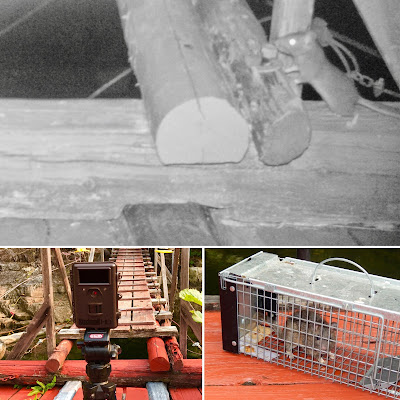Cabin Baking: Cabin Carrot Cake

¼ cup raisins
¾ cup grated carrots
2 tablespoons margarine
1 teaspoon cinnamon
½ teaspoon ginger
½ teaspoon cloves or allspice
1 cup dark brown sugar
1 cup water
 Heat ingredients together in a pan until melted and the raisins plump. Cool before proceeding.
Heat ingredients together in a pan until melted and the raisins plump. Cool before proceeding.1 ½ cups flour
1 teaspoon baking powder
1 teaspoon baking soda
½ teaspoon salt
½ cup chopped pecans (or walnuts) if desired
 Mix the dry ingredients in a bowl and add the cooled wet mixture. Stir until well blended. Add pecans or walnuts (if desired). Pour into a greased and floured 8X4” loaf pan. In addition to greasing, I like to add a piece of parchment paper to the bottom to prevent sticking. Pour the mixed ingredients into the pan.
Mix the dry ingredients in a bowl and add the cooled wet mixture. Stir until well blended. Add pecans or walnuts (if desired). Pour into a greased and floured 8X4” loaf pan. In addition to greasing, I like to add a piece of parchment paper to the bottom to prevent sticking. Pour the mixed ingredients into the pan. Bake for 25-30 minutes at 350 degrees. Do not over bake because it tends to become dry.
When a toothpick comes out clean, it's done.
Blend butter and cream cheese. Add powdered sugar and whip by hand until smooth. Mix in vanilla. This recipe make more than enough frosting for a loaf cake.
If you don't have all the ingredients for the cream cheese frosting, whipping cream makes a good substitute.
This recipe is derived from one called War Cake in my Fannie Farmer Cookbook. During the war, eggs and other ingredients were hard to come by due to rationing. That's how this modern-day eggless recipe got its name. And it's a good one to use at the cabin for the same reason. Groceries are a 25 minute boat and 15 minute car ride away (times two to get back home). -- Margy


























































